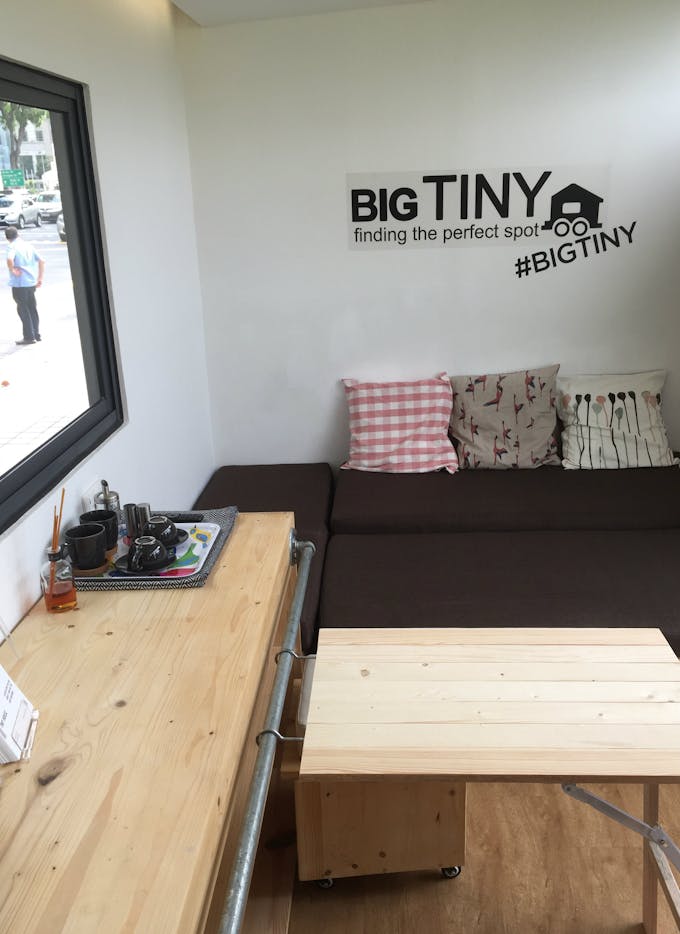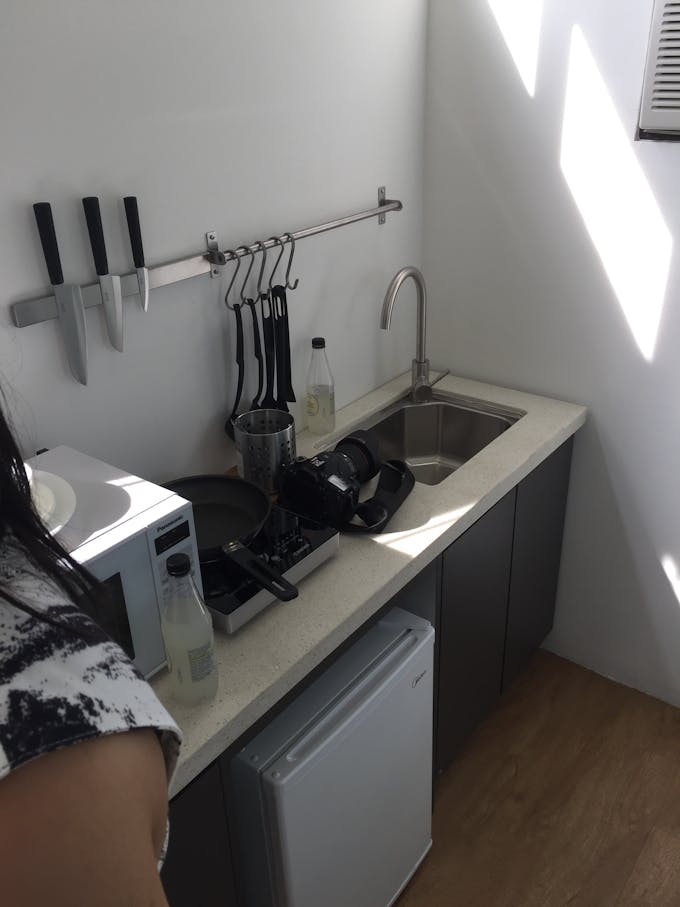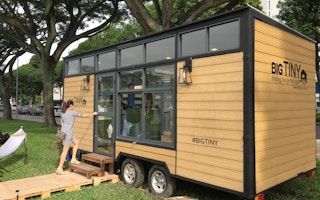Appliances running on solar energy, composting toilets and rainwater harvesting systems—these features could help tourists enjoying Australia’s natural attractions to leave behind a smaller environmental footprint, thanks to a new Singapore vacation concept.
To continue reading, subscribe to Eco‑Business.
There's something for everyone. We offer a range of subscription plans.
- Access our stories and receive our Insights Weekly newsletter with the free EB Member plan.
- Unlock unlimited access to our content and archive with EB Circle.
- Publish your content with EB Premium.
Travellers can do this by renting a tiny home from Singapore start-up, Big Tiny, which builds and deploys a range of sustainable tiny homes in scenic spots across Australia, such as farms or vineyards.
Each tiny home is equipped for off-grid living, and has between 3 and 5 kilowatts of solar panels for electricity, composting (as opposed to flushing) toilets, and a rainwater collection system for water, said Big Tiny co-founder Adrian Chia at a launch for media in Singapore last week.

The interior of the Big Tiny. Image: Eco-Business
“The dream of Big Tiny began two years ago during a farmstay along Australia’s Great Ocean Road. When I opened my door I saw greenery and wildlife up close, [and I realised that] this was the perfect way for me to recharge and get away from the hectic, digitalised lifestyle in Singapore,” he said.
Chia and his co-founders—Dave Ng and Jeff Yeo—decided to combine the concepts of tiny homes with ecotourism for a low-impact avenue to enjoy nature.
The tiny home movement has gained an international following as a growing number of home buyers, especially in the United States, opt for smaller houses for economic and lifestyle reasons.
“At Big Tiny, the unique point is we pair a tiny home with a spectacular rural setting,” said Chia. “So our tiny houses are hosted in farmlands, vineyards or anywhere with a good location.”
He added that Big Tiny works on a profit-sharing basis with partner landowners or hosts around Australia. These individuals take care of hospitality concerns such as ensuring that there are enough activities for guests to do in a location, and cleaning up after visitors.
Manufactured at a cost of S$80,000, each Big Tiny home comes with a bed, a toilet and shower, a kitchenette, and table space, and can fit between two and four people depending on the model. Co-founder Ng said Big Tiny is aiming to outfit its homes with mostly recycled wooden furniture.
The lodgings are also fitted with wheels so that Big Tiny can rotate them between destinations, which is likely to happen on an annual basis, said Chia.
But for starters, the company will station one at the edge of the Blue Mountains near Sydney, and another within the Mornington Peninsula, a 1.5-hour drive from the cultural centre of Melbourne.

Kitchenette. Image: Eco-Business
Chia explained that Singaporeans, the firm’s main target market, form a significant percentage of visitors to Australia—438,100 of 8.7 million visitors Down Under in the year ending October 2017, to be exact.
He added that the founders have received many enquiries following publicity events in Australia, and aim to bring the concept to New Zealand by the end of 2019.
Asked if Big Tiny was looking to bring its profit-sharing model to developing countries within Asia, Chia said the company would look into corporate social responsibility once the business was up and running proper.
But founders admit that the Big Tiny homes are far from perfectly sustainable. To guard against intermittent weather changes and a lack of solar power, they are still connected to the electricity grid. They also come with a back-up petrol generator when a connection to the grid is unavailable.
And while low-waste, the Big Tiny homes are far from no waste—composting toilets have to be manually emptied and leftover trash removed by host partners.
A first step to improving sustainability, said, Chia, would be to start offering recycling bins on-location so that guests can segregate their waste.
“As production increases, we will be improving our eco-friendly measures along the way too,” he said.










